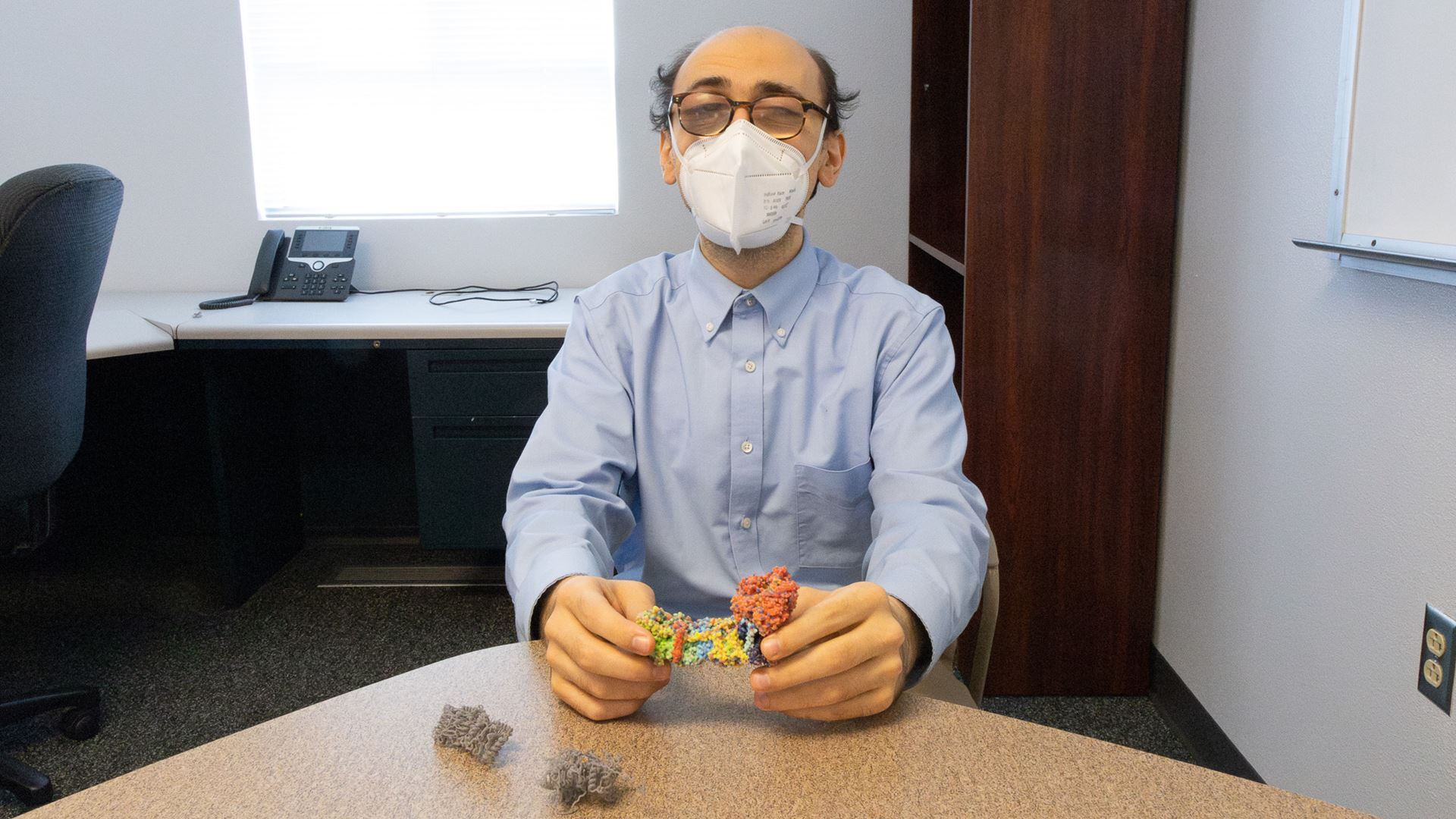New Mexico State University’s Assistant Professor Matthew Guberman-Pfeffer has been recognized as 2025 Trailblazer by Chemical and Engineering News — a series that highlights chemists with disabilities who are solving problems in new and innovative ways.
Through his research, teaching and development of accessibility tools for scientists who are visually impaired, Guberman-Pfeffer is bringing a fresh perspective to NMSU’s Department of Chemistry and Biochemistry.
A physical chemist by training, Guberman-Pfeffer studies the world at a molecular level. A lot of his research focuses on the way biological systems work in terms of energy and electron transfer.
“The material stuff around us is embodied knowledge,” he said. “By learning how to speak in this chemical language of the universe, we can learn how to arrange those atoms in new ways to unleash the potential around us.”
Being legally blind, Guberman-Pfeffer navigates his research with the help of specially designed tools. Many of these tools he designed himself, or in collaboration with other researchers with visual impairments.
“I’m very enthusiastic about designing software to make simulations more accessible generally, but I also have a particular passion about making science more accessible to the visually impaired because of my own experience,” he said.
Guberman-Pfeffer’s undergraduate studies ignited his passion for chemistry while also requiring innovative problem-solving for him to engage with the material.
For example, while sighted students could visually process the scientific images, figures and graphics in their textbooks, Guberman-Pfeffer relied on verbal descriptions or tactile renderings of that visual information. This challenge was underscored when transcriptionists lacked expertise in the subject and, for example, described an image of a protein as looking “like a ball of yarn dropped on [a] table. Ask your instructor for more information.”
Guberman-Pfeffer’s experience learning chemistry emphasized the need for independence and inclusion in science. As he continued to graduate school, he was able to experience more of that independence for himself.
“Grad school was magical because I was given so much freedom,” he said. “I wished there were more hours in the day because I was free to explore, experiment and excel.”
Now, Guberman-Pfeffer dedicates part of his research to developing tools that make chemistry more accessible to everyone. His goal is to lower the effort barrier while still encouraging students and researchers to be creative problem solvers.
“I think there’s some virtue, some value at least, in adverse situations. You don’t want adversity—the more you minimize it, the better. But when faced with adversity, what you take away from it is a strength.”
One of his many current projects blends interactivity and nostalgia to make complicated structures in biochemistry accessible to those who are visually impaired.
“I love the idea of turning research into a video game,” Guberman-Pfeffer said. “In the early 90s, before nice user graphical interfaces and computers, people played text-based games. I had the idea of applying that to design a protein structure explorer game.”
Like those early 90s video games, his program would allow scientists to explore the structure of a protein through text-based descriptions and prompts. Users can navigate through protein structures layer by layer, learning about each section with the flexibility of choosing their own path to explore.
“Discovery happens when we see something that has always been there in a different way,” he said. “The more people you have with different perspectives, the more likely you are to make a discovery. We have to maximize that opportunity by having more people interacting with the same data.”
For Guberman-Pfeffer, improving accessibility in science is not just for the benefit of those who need it—it advances the entire field.
“The record of science is open-ended,” he said. “If someone at some other time and place reads what I’ve done and gets a new idea, or it helps them in some way, that’s all I’m aiming for.”
-30-
CUTLINE: New Mexico State University Assistant Professor Matthew Guberman-Pfeffer is named a 2025 Trailblazer by Chemical and Engineering News. (NMSU photo by Sarah Kimmerly)
CUTLINE: Lithophanes, 3D printed representations of images, help New Mexico State University Chemistry Asssistant Professor Matthew Guberman-Pfeffer access information from graphs and other visual data. (NMSU photo by Sarah Kimmerly)
CUTLINE: A close-up of example of a 3D printed model of a protein that helps New Mexico State University Chemistry Asssistant Professor Matthew Guberman-Pfeffer conceptualize its structure. (NMSU photo by Sarah Kimmerly)
CUTLINE: A close-up of example lithophanes, 3D printed representations of images, that help New Mexico State University Chemistry Asssistant Professor Matthew Guberman-Pfeffer access information from graphs and other visual data. (NMSU photo by Sarah Kimmerly)

